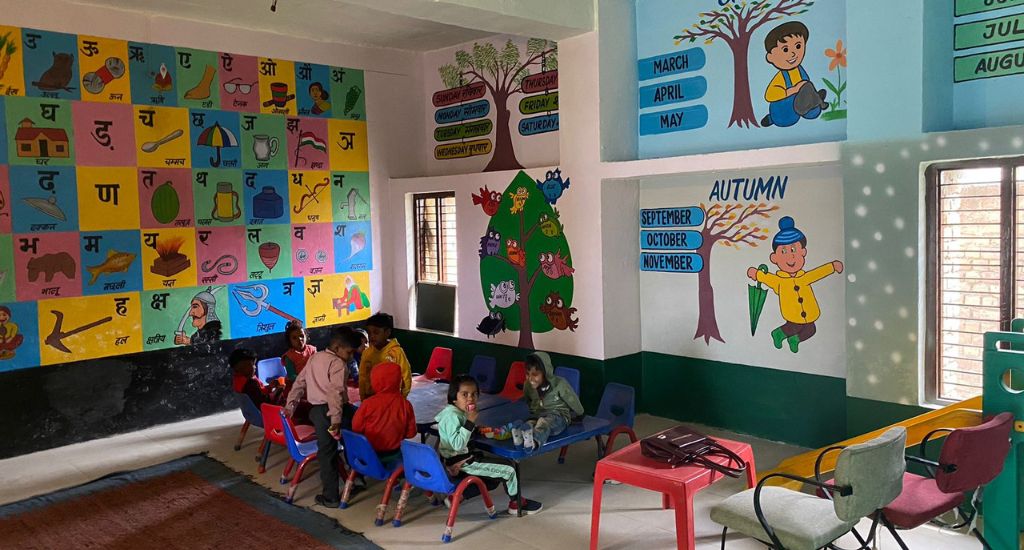
Revamped play schools make learning fun in Haryana
A youth-led governance programme transforms Haryana’s anganwadis into fun learning centres for children, while empowering the staff to be proactive and confident.

A youth-led governance programme transforms Haryana’s anganwadis into fun learning centres for children, while empowering the staff to be proactive and confident.
As a young professional working with the Haryana government and exploring the challenges and solutions in implementing its Playway School Programme, my first visit to such a play school was to the Kurar anganwadi centre in Ganaur block in July 2023 – the first of many such visits.
The Playway School Programme aims to foster collaboration through district-level Early Childhood Care and Education (ECCE) committees and leads to improvements in infrastructure, while making learning fun for young children.
I got associated with the Playway School Programme as a Chief Minister’s Good Governance Associate (CMGGA) in Sonipat district. The CMGGA programme – a collaboration between the Haryana government and Ashoka University to improve governance – has offered me the chance to observe social issues from an ‘insider-outsider’ perspective, while having the opportunity to interact with district officials, bureaucrats and the chief minister of Haryana.
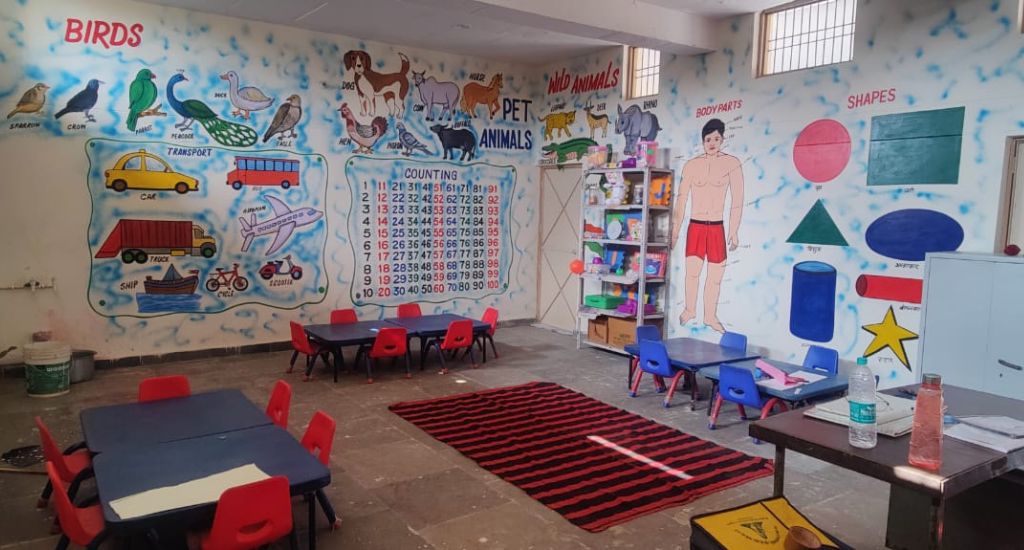
The initiative stands as the first-of-its-kind youth-led good governance programme in India. It acts as a bridge between the state government’s flagship programmes and their on-ground implementation.
In May 2023, we began visiting the Playway schools, part of an aspirational state programme aligned with the (ECCE) goals outlined in the National Education Policy 2020.
Also Read: Main Bhi Curie: Haryana schoolgirls learn secrets of science
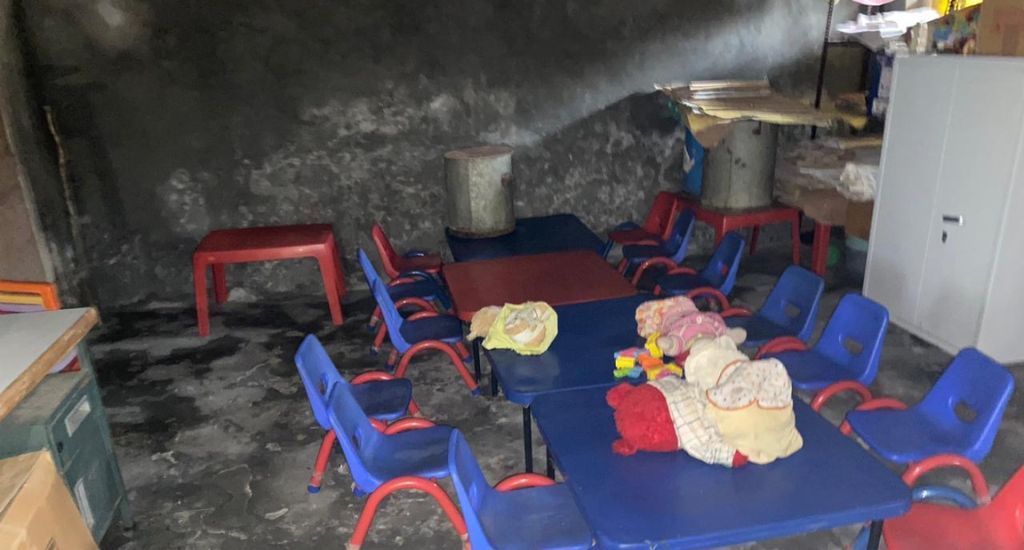
These schools – essentially upgraded anganwadi centres – offer an enriched array of play-based learning material and follow a structured preschool curriculum guided by a varshik sandarshika (annual curriculum calendar), with more qualified and trained anganwadi workers serving as educators.
The Kurar anganwadi centre in Sonipat’s Ganaur administrative block is one of Haryana’s 4,000 Playway schools. When we paid a visit to the centre, we saw Saumya, a local anganwadi worker, passionately guiding a class of 15 children through poems and rhymes, assessing their cognitive, language and physical skills.
The dedicated efforts of the Women and Child Development Department and Pratham were evident but the infrastructure, though inspiring, was inadequate to meet the children’s needs. The classroom had spalled walls masked by old charts and posters. There were cracks on the ceiling, the flooring was uneven, and the classroom was dimly lit. One corner of the room was being utilised as a storage area, piled up with objects, affecting the aesthetics as well as posing a potential safety concern.
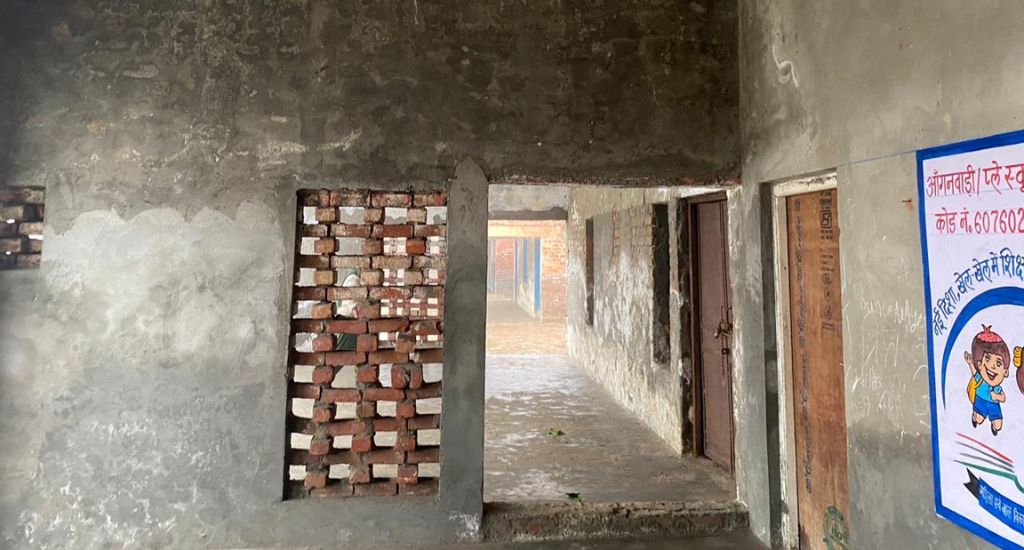
In the absence of a separate kitchen space, Updesh, the anganwadi helper, was preparing meals for the children using a gas stove placed on the floor in the same classroom.
Seema, the supervisor, further revealed that the children had to walk a kilometre to access the toilet, which is shared with the older students of a government school.
Lauding the Playway initiative for revitalising the anganwadi system, Seema emphasised its potential for holistic child care. However, she added that existing infrastructure deficiencies hinder its effectiveness for creating a conducive learning environment.
Also Read: Manipur kindergarten kids learn to rock
Since early childhood care and education is significant for the socio-emotional and cognitive development of children, addressing these challenges is imperative.
The Women and Child Development Department faces limitations due to resource constraints. Discussions at the CMGGA forum highlighted these issues, leading to interventions aimed at fostering inter-departmental coordination.
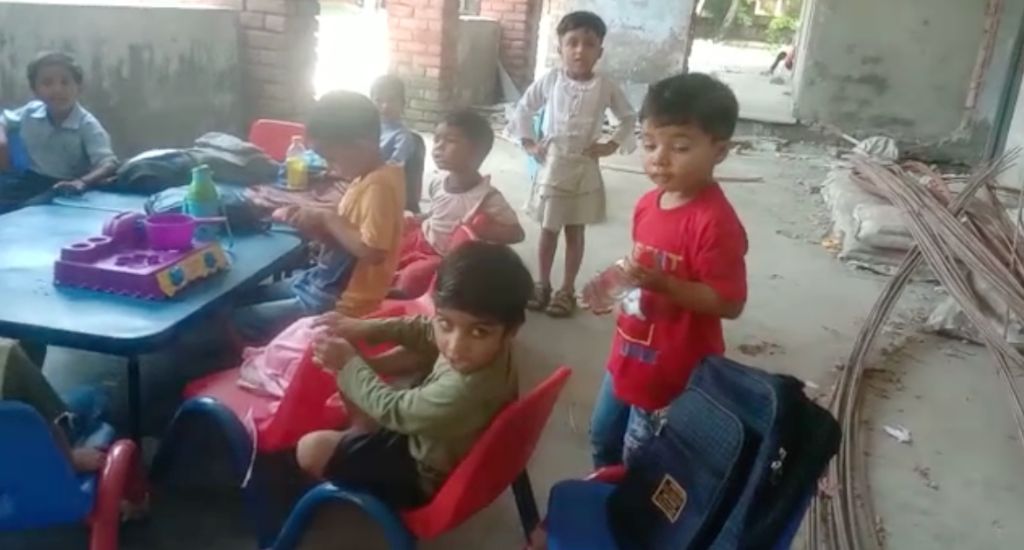
The formation of district-level early childhood care and education committees (DLECs) across Haryana, chaired by senior officials and comprising representatives from relevant departments, shows a collaborative approach. These committees strive to ensure that all Playway schools meet all the basic infrastructure requirements.
The establishment of DLECs was facilitated by the CMGGAs to standardise quality infrastructure across districts. Six key parameters were identified for intervention: room facilities, kitchen amenities, child-friendly toilets, drinking water, metered electricity and building-as-learning-aid (BaLA) paintings.
DLECs in Sonipat, for instance, focus on leveraging the CSR initiatives of industrial establishments and engaging administrative officers to drive progress. Real-time monitoring dashboards aid in problem solving, facilitating effective programme management and ensuring continuous improvement in the infrastructure and quality of education at Playway schools.
The intervention has worked to improve the anganwadi centres and boost the morale of the staff.
Also Read: Kanha women make school fun for tribal kids
The anganwadi centre in Kurar now has access to clean drinking water through a reverse osmosis plant, functional electricity connection and child-friendly toilet facilities. Further, attractive and child-friendly BaLA paintings adorn the walls, helping the children learn the alphabet and numbers. The learning material painted on the walls creates an immersive learning experience.
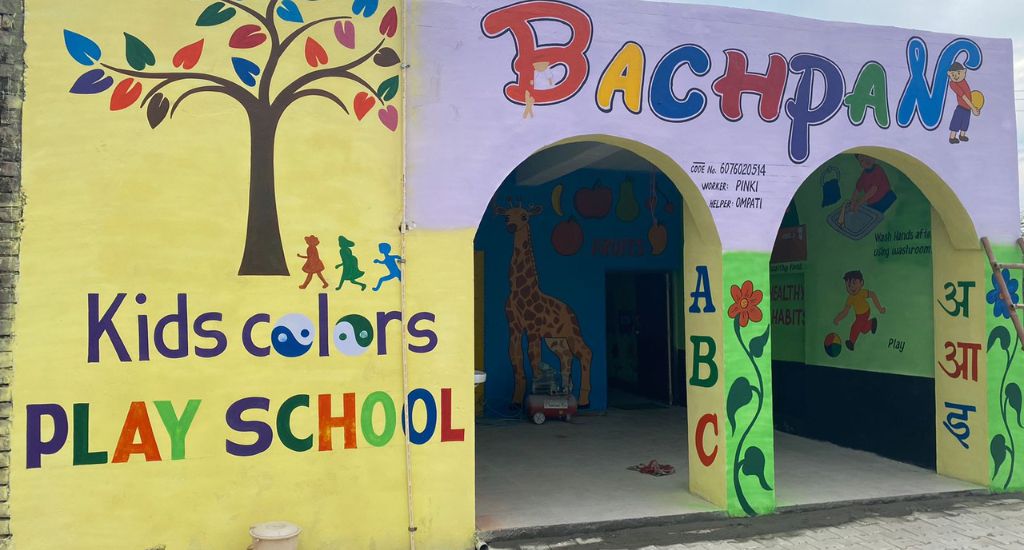
The intervention empowered anganwadi workers and supervisors to exercise their agency as they were encouraged to hold dialogues with sarpanches and gram secretaries to garner support for the initiative. For instance, Shakuntla Kumari, a supervisor, who was initially hesitant to speak to the authorities concerned, got renewed confidence after attending meetings held by the DLEC leadership. She was then able to present issues and raise requests at the meetings, prompting many sarpanches to support her.
In terms of impact, 15 model Playway schools have been developed in Sonipat. Between June 2023 and March 2024, the district has seen an almost 60 percent increase in electricity connections and 40 percent increase in RO installations, while kitchen and toilet availability have risen by 30 percent and 40 percent, respectively. Also, there are 6 percent more BaLA paintings in schools now. Several more upgrade works are in the pipeline.
With each step under the DLEC intervention, the collaborative spirit among the stakeholders has grown stronger, reinforcing the notion that true progress is born out of collective action and shared responsibility. Viewing the efforts get translated to progress on the ground is both humbling and satisfying. Similar endeavours have been taken up in all the 22 districts of Haryana to implement the Playway Schools Programme in letter and spirit.
Also Read: Schoolgirls raise their voice successfully against prejudice
The lead image at the top shows the revamped Playway school in Lath village of Sonipat district in Haryana. (Photo by Jatin Pawar)
Jatin Pawar is a Chief Minister’s Good Governance Associate at Sonipat district and works directly with the district administration to improve the quality of some of Haryana’s flagship schemes across various sectors such as education, health, public service delivery and water conservation.